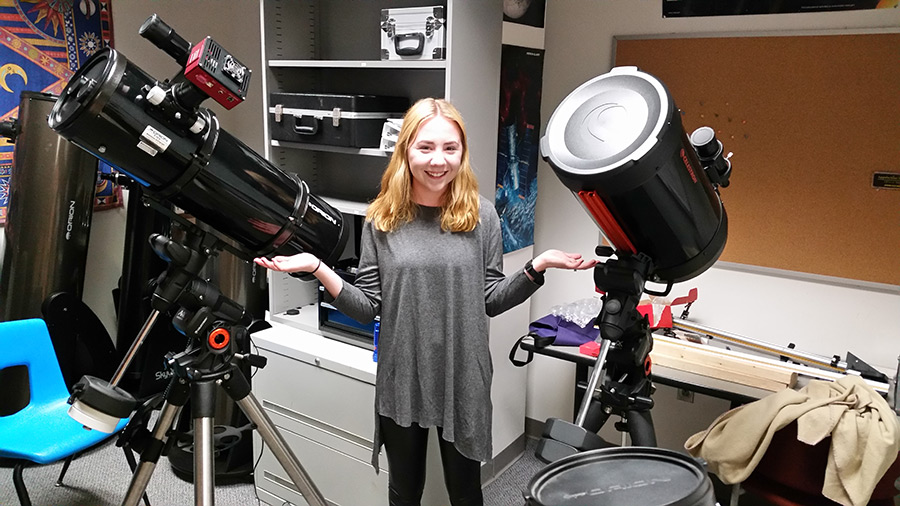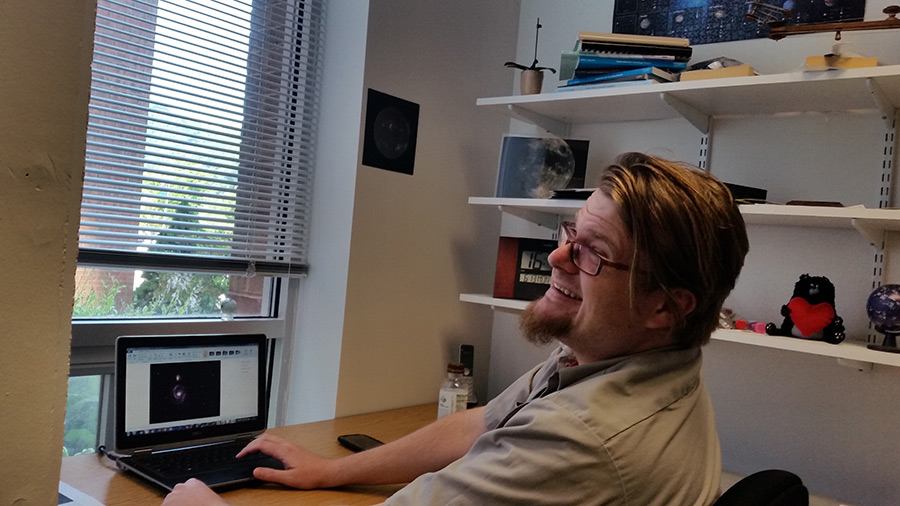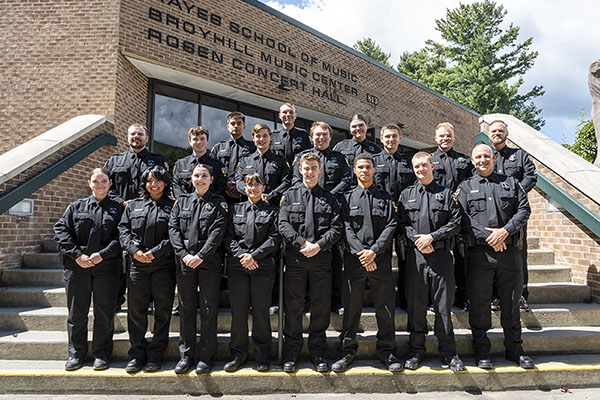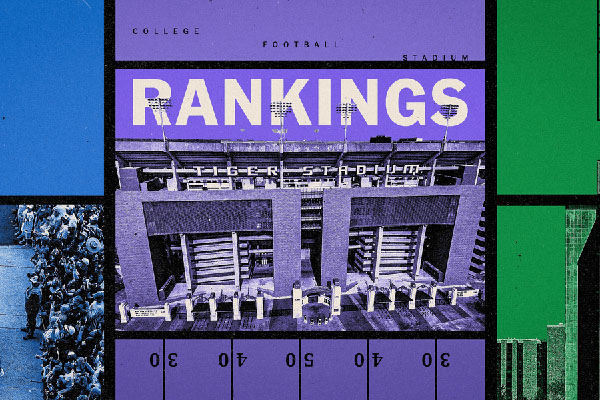BOONE, N.C.—Hunter Stark, an Appalachian State University sophomore communication major from Charlotte, and James Howe, a Southwestern Community College senior and triple major in electronics, computer, and network engineering technology from Miami, Florida, have been awarded the best undergraduate student paper from the North Carolina Section of the American Association of Physics Teachers.
At each meeting of NCS-AAPT, undergraduate student papers are considered for an award, which includes a check for $100. In order to compete for the award, students must provide a presentation on their research. Stark and Howe worked with Appalachian State University’s Dr. David Sitar, astronomy outreach coordinator, in their partnership. “This was a great collaboration between students from different institutions and from different disciplines,” said Sitar.
The paper began as a lab assignment in spectroscopy. RSpec, the program around which the assignment centered, required calibration in order to allow students to more easily use the program. “The initial calibration, which can sometimes be difficult and outside the scope of the lesson, was the challenge. The objective was to allow students to bypass the setup and quickly jump into spectroscopy in a colorful and engaging way, while preserving the depth of the task,” said Howe.
Spectroscopy is the analysis of the visible spectra emitted by bright stars photographed using a diffusion grating. These spectra provide information about the chemical composition, temperature and classification of stars. Howe explained that, “In general, spectroscopy is the analysis of waveform emissions of any object in any wavelength. It happens to be easy and relatively inexpensive to work in the visible spectrum and deal with high-emission objects in that spectrum, like stars.”
Stark came into the project with a passion for astrophotography, and she was interested to see if she and Howe could take black and white spectroscopy analysis to a more colorful visual understanding. The presentation involved a paper and poster depicting their discovery, a story line of their process, data they collected and work to be completed in the future.
“I am thankful for Dr. Sitar seeing something in me and challenging me to get involved. It is good to have differing opinions and perspectives to work together as a team, and I am positive about the perspective it gives me for my future,” Stark said.
Both Howe and Stark will receive an award at the next NCS-AAPT meeting in March. The outstanding undergraduate student award is annually given to recognize broad academic achievement in a rising junior or senior indicated by factors such as: GPA, GPA in physics courses, reference letters, research projects or seminars, a narrative on personal interest in physics and a description of future plans. “Our peers were outstanding, so I’m very proud that we were chosen for the prize,” said Howe.
Stark, who started the project as a communication major, will be changing her major after this project to physics and astronomy. “The biggest reason I have not changed yet, was that I wanted to prove to myself that I could do this. I felt challenged beyond my comfort zone, but pushing myself felt good, and this award is definitely a boost in confidence that I am moving in the right direction,” she said. Stark said she was very appreciative of the outreach by Sitar to include her on this project, and even though it was difficult, with encouragement and guidance she has grown from this opportunity.
About the College of Arts and Sciences
The College of Arts and Sciences is home to 16 academic departments, three stand-alone programs, two centers and one residential college. These units span the humanities, social sciences, and the mathematical and natural sciences. The College of Arts and Sciences aims to develop a distinctive identity built upon our university’s strengths, traditions and unique location. Our values lie not only in service to the university and local community, but through inspiring, training, educating and sustaining the development of our students as global citizens. There are approximately 5,850 student majors in the college. As the college is also largely responsible for implementing Appalachian’s general education curriculum, it is heavily involved in the education of all students at the university, including those pursuing majors in other colleges.
About Appalachian State University
As a premier public institution, Appalachian State University prepares students to lead purposeful lives. App State is one of 17 campuses in the University of North Carolina System, with a national reputation for innovative teaching and opening access to a high-quality, cost-effective education. The university enrolls more than 21,000 students, has a low student-to-faculty ratio and offers more than 150 undergraduate and 80 graduate majors at its Boone and Hickory campuses and through App State Online. Learn more at https://www.appstate.edu.
What do you think?
Share your feedback on this story.














